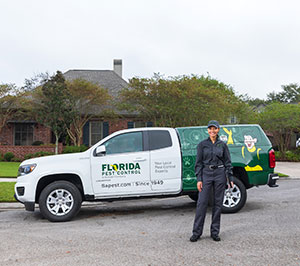Quality A1 Pest Control Services Charlotte - Secure Your Home
Wiki Article
Bed Pest Treatment Breakdown: Comparing Chemical Vs. Non-Chemical Solutions
In the realm of pest control, especially when dealing with the consistent problem of bed bugs, the choice in between chemical and non-chemical therapy solutions can be a crucial one. Both strategies use unique benefits and drawbacks, influencing aspects such as performance, security considerations, and general price. By examining the nuanced details of each method, a more clear understanding of which course to seek in dealing with a bed pest invasion can be achieved.Effectiveness of Chemical Treatments
Chemical treatments for bed insect invasions have been widely identified for their rapid and powerful efficacy in removing these insects. When taking into consideration the performance of chemical therapies, it is essential to recognize that they can provide a fast and detailed option to a bed bug trouble.Additionally, chemical treatments have the advantage of providing recurring effects, suggesting that they can remain to remove bed bugs also after the initial application. This recurring activity is specifically valuable in combating any type of potential re-infestations. In addition, the quick action of chemical therapies can bring relief to people facing extreme bed bug problems, allowing them to regain control of their home rapidly.
Security Worry About Chemical Solutions
One important facet that calls for cautious factor to consider when making use of chemical options for bed insect therapy is making certain the safety and security of owners and the atmosphere. Direct exposure to specific chemicals used in bed insect therapies can lead to breathing issues, skin inflammation, or various other unfavorable responses, particularly in people with pre-existing conditions or level of sensitivities.Additionally, the environmental influence of chemical solutions is one more significant consideration. Some chemicals utilized in bed bug therapies may be unsafe to helpful insects, wild animals, and ecosystems if they seep into the soil or water supply. It is vital to utilize chemical treatments sensibly, adhering to safety standards, and taking into consideration less hazardous choices to reduce these threats and make certain the reliable and secure monitoring of bed bug problems.
Benefits of Non-Chemical Methods
Considering the potential security worries and ecological impact connected with chemical solutions for bed insect therapy, discovering non-chemical methods offers an encouraging alternative with several distinctive advantages. Non-chemical approaches supply a safer choice for homes, especially those with kids, family pets, or people sensitive to rough chemicals. These methods get rid of the risks of exposure to toxic compounds, lowering the possibility for negative health results. Furthermore, non-chemical treatments are eco-friendly, as they do not add to air or water air pollution, making them a sustainable choice for insect control.Additionally, non-chemical services can be reliable in targeting bed pests, consisting of hard-to-reach areas where chemical therapies may not permeate - A1 bed bug exterminator charlotte. Approaches such as heat therapy, vacuuming, vapor cleaning, and bed mattress coverings give complete obliteration without the usage of unsafe chemicals.
Limitations of Non-Chemical Treatments

In addition, non-chemical therapies Full Report often need several applications to accomplish successful removal. This can be taxing and might not constantly guarantee full elimination of all bed pests and their eggs, specifically in covert or hard-to-reach areas.
In addition, the success of non-chemical therapies heavily counts on proper execution and thoroughness, which can be challenging for individuals without specialist competence. Poor application of non-chemical methods might lead to insufficient eradication, bring about persistent problems and the need for added therapies.
Consequently, while non-chemical treatments have their benefits, it is vital to recognize these restrictions and consider them when determining one of the most effective method for managing bed bug invasions.
Expense Comparison: Chemical Vs. Non-Chemical Options
Provided the limitations connected with non-chemical treatments, a vital element to examine in the context of bed insect management is the cost comparison in between chemical and non-chemical choices. In comparison, non-chemical therapies like heat treatment or steam can be a lot more pricey, with prices varying from $1,000 to $6,000 for a whole home. While the initial price of chemical therapies might appear reduced, several therapies might be needed to completely get rid of the invasion, potentially boosting the total expense.Conclusion

Considering the potential safety worries and environmental influence connected with chemical services for bed insect treatment, discovering non-chemical techniques presents an appealing choice with several distinct benefits.Given the limitations associated with non-chemical treatments, a vital facet to examine in the context of bed bug monitoring is the cost contrast in between chemical and non-chemical alternatives. In contrast, non-chemical therapies like warm treatment i thought about this or vapor can be extra have a peek here expensive, with expenses varying from $1,000 to $6,000 for an entire home. While the preliminary cost of chemical treatments might appear lower, numerous treatments may be required to totally remove the problem, possibly increasing the general price.In verdict, when comparing chemical and non-chemical bed insect treatment options, it is vital to think about efficiency, security, benefits, limitations, and cost.
Report this wiki page